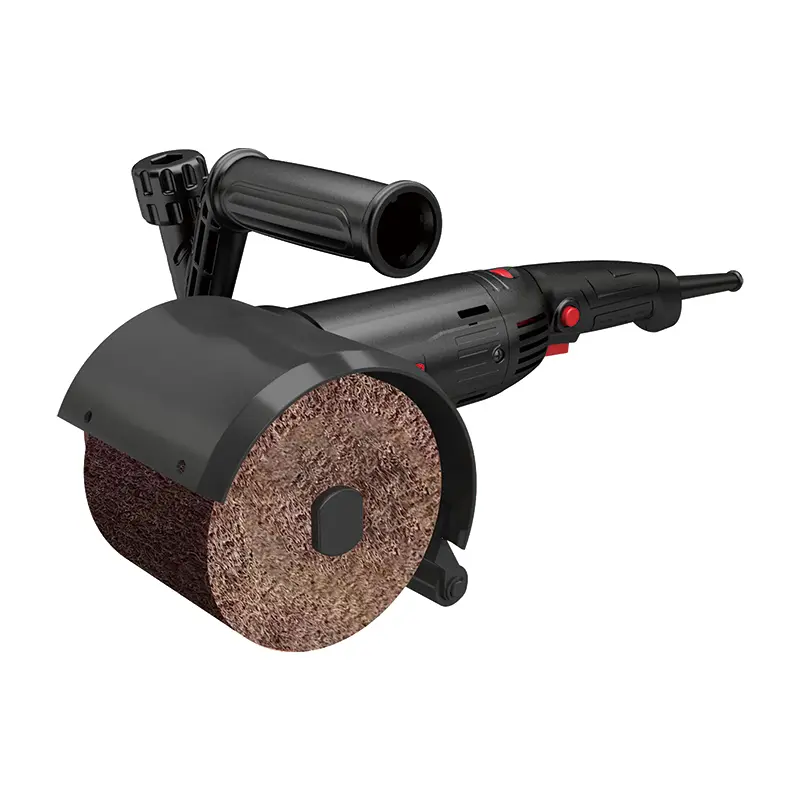In the metal processing industry, wire drawing machines are indispensable equipment. With the continuous rise in energy costs, the design of energy-saving wire drawing machines is becoming increasingly important. Among them, the frequency converter plays a key role in reducing the energy consumption of the wire drawing machine, and can even achieve a remarkable effect of reducing energy consumption by 30%.
First, the energy-saving principle of frequency converters
The core function of a frequency converter is to change the power supply frequency of the motor, thereby regulating the motor’s rotational speed. The motors of traditional wire drawing machines often operate at a fixed speed regardless of the actual production requirements. This leads to a large amount of electrical energy being wasted under low load or non-full load working conditions. The frequency converter can adjust the motor speed in real time according to the actual working requirements of the wire drawing machine. For instance, during the initial stage of wire drawing, the metal wire is relatively thick and requires greater tensile force and motor torque. The frequency converter can increase the output frequency to enable the motor to run at high speed. As the wire drawing process progresses, the metal wire becomes thinner and the required tensile force decreases. The frequency converter then lowers the output frequency, allowing the motor to run at a low speed to avoid unnecessary energy consumption.
Second, optimize the motor operation mode
1. V/F control mode: In energy-saving wire drawing machines, the V/F control mode is widely applied. By reasonably setting the V/F curve, it is ensured that the motor can maintain good operating efficiency at different rotational speeds. For wire drawing machines, their load characteristics are rather complex. However, under most conventional working conditions, appropriately adjusting the V/F ratio based on the rated parameters of the motor and the actual load situation can effectively reduce the motor’s magnetic flux, decrease iron loss, and thereby lower energy consumption.
2. Vector control mode: For some wire drawing processes with high requirements for speed control accuracy and dynamic response, the vector control mode is more suitable. It can precisely control the torque and speed of the motor, making the motor run more smoothly and efficiently, and further exploring the potential for energy conservation. In some high-precision wire drawing operations, vector-controlled frequency converters can enable motors to precisely match the load requirements and avoid excessive energy loss.
Third, precisely match the load with the rotational speed
1. Adjust the frequency according to the process: Precisely set the operating frequency of the frequency converter based on the different stages of the wire drawing process and the material and specification of the metal wire. When drawing softer metals or fine wires, the required rotational speed is relatively low. When drawing hard metals or thick wires, a higher rotational speed is required. Through this precise matching, the motor can avoid idling or overloading operation, achieving energy conservation.
2. Real-time monitoring and automatic regulation: Utilize sensors to monitor the load conditions of the wire drawing machine in real time and feed back the signals to the frequency converter. The frequency converter automatically adjusts the output frequency according to the feedback signal, ensuring that the motor always operates in the best condition. When there is a brief change in resistance during the wire drawing process, the frequency converter can respond promptly, adjust the speed, ensure the continuity and stability of the wire drawing, and at the same time avoid the increase in energy consumption caused by improper speed.
Fourth, soft start and braking save energy
1. Soft start function: When the motor of a traditional wire drawing machine starts, the current impact is large, which not only interferes with the power grid but also consumes a large amount of electricity. The soft start function of the frequency converter enables the motor’s starting current to gradually increase from zero, avoiding the impact of sudden large currents, reducing the starting energy consumption, and simultaneously extending the service life of the motor and related equipment.
2. Braking energy recovery: During the shutdown or deceleration of the wire drawing machine, the motor is in a power generation state. A frequency converter with energy recovery function can feed this part of the braking energy back to the power grid or store it for use by other equipment, rather than wasting the energy in the form of heat as in the traditional way, thereby further improving energy utilization efficiency.
The frequency converter provides an effective way to reduce energy consumption by 30% for the design of energy-saving wire drawing machines by optimizing the operation mode, precisely matching the load and speed, and achieving functions such as soft start and braking energy recovery. It helps enterprises reduce costs and enhance competitiveness in production.
Post time: Jun-18-2025

